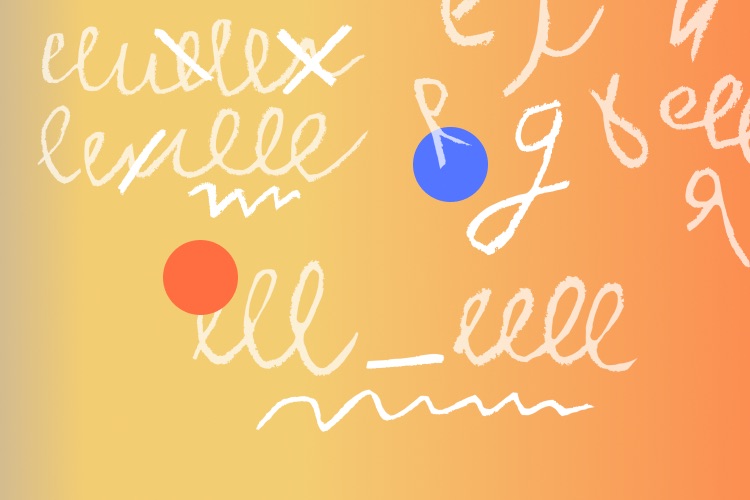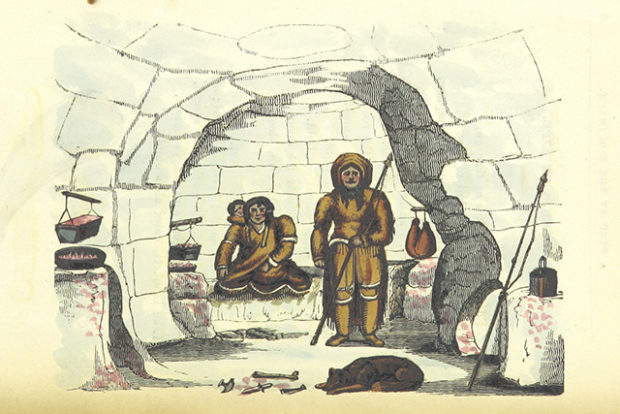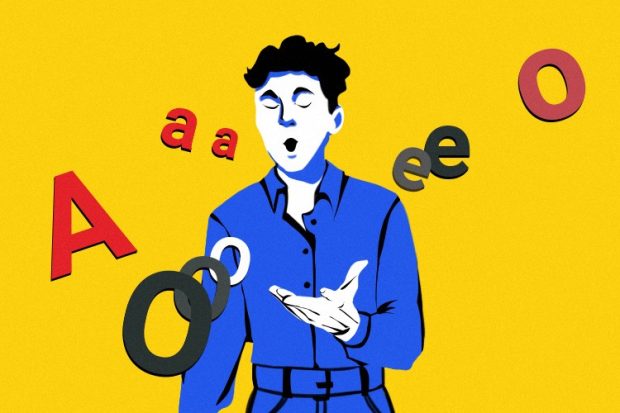Global Language Network
Media scientist Cesar Hidalgo on multilingualism, hierarchy of the language networks, and cross-lingual resear...

A textbook definition of (morphological) case defines it as marking of a noun (or noun phrase) for its syntactic and/or semantic role. Thus, the use of accusative case on the noun identifies it as a (direct) object of the verb, and instrumental case on the noun (as found for example, in Russian) most commonly marks instruments. While the definition as such is fairly clear, it is more controversial to what extent this definition case be extended to other similar patterns. If, say, agreement on modifiers (adjectives agree in cases with nouns in Russian) is the same phenomenon, as the case on nouns? Or does, the vocative case, as found in Classical Greek and some Slavic languages, represent case, even if it does mark dependency, but is rather means of address? And, indeed, does English have case, if it is only visible in pronouns?
More problems will be found if we extend the discussion beyond European languages. Does Japanese have cases? This is not obvious, as the morphological status of these forms is unclear; traditionally they are called postverbal particles. Moreover, some of them such as the subject (“nominative”) markers ga and wa additionally express discourse meanings (focus vs. topic, that is new vs. given information). Another controversial example comes from Even (a Tungusic language I did fieldwork on), which has a special case called “designative’’. Its use is illustrated by the following example: Bej hin turki-ga-s emun [man your sledge-DES-your brought] ‘The man brought the sledge for you’. The designative case is similar to accusative in that it marks the direct object, but, in addition, reinterprets the possessor as a beneficiary (the meaning of the example above is ‘brought a sledge for you’, not ‘brought your sledge’). Is it OK for a case to mark different roles of different arguments? Does it still qualify as case, or maybe, is a marker of prospective (future) possession? There will be different answers depending on the definitions of case.
A related problem concerns the number of cases. For example, a simple question such as “How many cases are there in Russian (Hungarian, etc.)?” will yield very different answers depending not only on the definition of case, but also on other factors, both formal and functional. To take one example, on some counts, Daghestanian languages of the Caucasus, feature hundreds of cases, which is due to a very elaborate system of locative relations. This view was shown to be untenable (Bernard Comrie, a famous typologist, humorously refers to it as “Daghestanian case hoax”). Indeed, the alleged case markers are actually combinations of two different categories, and only one of them is related to cases, whereas the other is related to localization, and would be expressed by spatial prepositions (like English on, in, under, etc) or postpositions in other languages. On this analysis, the form χula-qas [house-PostElative] ‘from behind the house’ in Agul (a Daghestanian language) should be properly represented as χul-a-q-as [house-obl-post-elative], with the location marker -q- ‘behind’ and the elative case –as ‘from’. On the other hand, markers of localization when expressed through affixes (rather than adpositions) may indeed fuse with case proper, as happened in some Finno-Ugric languages.

That said, there is little doubt that there is large variation across languages with respect to the number of cases. This variation is partially related to overall morphological typology (morphological complexity) of the language involved. Thus, an isolating language like Chinese will not display morphological case, as familiar from inflectional languages (like Russian), or agglutinating languages, like Turkish. Instead it would rely on adpositions, particles and the like; for example, in Chinese, the meaning of the dative case would be rendered by the ‘coverb’ (deverbal preposition) gĕi, originally ‘give’.

While it may be impossible to explain (let alone predict) why certain cases are grammaticalized in individual languages, in part this may be related to the “language profile”, that is to a degree of prominence a language attributes to a certain functional domain. Thus, it is hardly surprising that languages of the highland nations such as Daghestanian peoples of the Caucasus, will also display a largest number of spatial cases, and other affixal localization markers. Similarly, Kiranti languages, spoken in Himalayas, are exceptional in manifesting a phenomenon of “altitudinal” cases indicating locations higher, lower, or at the same level as the reference point. Compare in Camling: kham-dhi ‘to the house (at a higher altitude)’; khim-i-ni ‘to the house (at a lower altitude)’; khim-ya-ki ‘from the house (at the same altitude). In other cases, “language profile”, is determined by sociolinguistic factors, rather than by the geographic setting. Thus, in Korean, which along with Japanese is known for grammaticalizaing politeness distinctions through honorifics, it is not surprising to find such distinctions in the domain of case marking as well. For example, Korean distinguishes as many as four different dative markers: the ‘formal dative’ in eykey, the ‘informal dative’ in hanthey, the ‘deferential dative’ in kkey, and the ‘inanimate dative’ in ey. Ultimately, an explanation in terms of “language profile” is compatible with the grammaticalization account invoking frequency of certain markers as an explanatory factor: those functional domains, which are more salient in a particular language, are also more frequently encoded and, hence, more likely to grammaticalize.
As much of linguistic terminology in general, case terminology ultimately derives from the classical tradition. The names for individual cases (‘nominative’, ‘accusative’, etc) came to us from Classical Greek mediated through Roman tradition (so that ptōsis became cāsus, onomastikē became nominatīvus, genikē became genitīvus and so on), likewise the terms such as ‘declension’, and even the order in which cases are presented in paradigms in textbooks are inherited from the classical tradition. Some other traditions have been influential as well, as discussed by Barry Blake (an Australian linguist and the author of the classic textbook on case). For example, Charles Fillmore’s theory of “semantic cases” (semantic roles) was conceived as an early version of generative grammar (in 1960-s), but has its antecedent in the classical Sanskrit studies, in particular, in the kāraka theory of the ancient Sanskrit scholar Pāṇini.
For my part, I am a functional typologist, which also implies a certain perspective on the study of case. Typological studies address cross-linguistic variation in distribution of case systems, and raise question what are the reasons behind this variation and uniformity (functional considerations, language contact, etc). This approach is also in line with grammaticalization theory, which approaches the issues from a historical perspective, looking at the cycles of development of certain linguistic phenomena (in particular, case systems).
More generally, typologists are more interested in statistical rather than absolute universals; that is, they are interested in which patterns are frequent, and what are dependencies between certain features, rather than what is possible. Universal patterns (all languages have consonants and vowels, all languages distinguish nouns and verbs), are often trivial from a linguistic viewpoint, while cross-linguistically frequent patterns, deserve special attention, since they reveal preferences in language processing and language use.
As a functional typologist, I try to relate distribution of certain linguistic phenomena (their frequency) to communicative usefulness, and different factors that contribute to it. The factors involved (such as economy and analogy) usually have a transparent processing motivation, as confirmed by psycholinguistic research. For the domain of case, one motivation for the use of cases is to distinguish between subjects and objects. This is the so called discriminatory approach to case marking as advocated by Bernard Comrie, R.W.M. Dixon, Michael Silverstein and others. To take a simple example, an expression like “John Bill hit’ would need some disambiguation to signal who is the subject (agent) and who is the object (patient) in this construction. Therefore, languages would either use an Accusative marker on the object (as most European languages do), while some other languages (“ergative” languages like Basque, and many Australian languages) use a special marker on the agent (transitive subject) instead (not found on subjects of intransitive sentences). Of course, case marking may also be dispensable, if a language has a strict SVO (subject-verb-object) order or has subject agreement (as in English). Interestingly, in other constructions, case marking can be more dispensable, as there is no need to disambiguate. For example, for the situation “John reads a book” the roles are clear, as there is no possible confusion as to who is the subject and/or the object. Hence the phenomenon of „differential object marking“ to the effect that only some types of objects need to be marked in some languages. For example, in Hindi only animate objects need to be marked, while marking of inanimates is optional. And in (a Papuan language) Awtuw, the object is marked if it is “more animate” than the subject, or, as linguists use to say, if it is higher on the Animacy Hierarchy (which starts with pronouns, proceeds to humans, then animates and ends with inanimate entities). In all these examples, the use of case is basically related to disambiguation. Earlier these patterns were explained in terms of ‘markedness’ (an important concept in structuralist tradition), where unmarked refers to more natural, marked to less natural. Nowadays an increased number of typologists follow Martin Haspelmath in replacing ‘markedness’ with frequency. What is less frequent (hence less expected) should be marked to avoid ambiguity.

Ambiguity (and markedness) is surely not the only factor that motivates use of cases. In particular, the use of locative cases and other oblique cases cannot be reduced to disambiguation as they express particular semantic roles. For that reason they (along with other ‘oblique cases’ such as instrumental, comitative and the like) are called ‘semantic’ cases, unlike ‘syntactic’ cases used to code more abstract grammatical relations (nominative, accusative). These two function (disambiguation/markedness and role marking) should be then be acknowledged as separate functions, although they are also interrelated (in particular, role marking contributes to disambiguation).
Where do case markers come from? For semantic cases (with more concrete semantics) their origin is better documented in the grammaticalization literature. Thus, a locative case may come from an adposition meaning ‘inside’, which can, in turn, derive from a body part like ‘stomach’. This is also true of the Tungusic Even, mentioned above, where the dative-locative case in –du (as in d’uu-du ‘in (the) house’) originates from a postposition ‘inside’, which in its turn has its origin in the name for a body part ‘guts’. Similar cases have been reported from different parts of the world, as documented in grammaticalization literature (in the work of Christian Lehmann, Bernd Heine, and their followers). For syntactic cases, the picture is more complex. Some of them develop from further grammaticalization of semantic cases. Thus, a locative or directional marker can develop into a dative marker (recall the abovementioned locative-dative –du in Tungusic), and further extended to (animate) objects in general (as actually happened with the allative preposition a in Spanish, which is used for recipients but also for animate patients in a differential object marking pattern). In some other languages markers for subjects and objects (accusative and or ergative markers), come from reanalysis of discourse markers (markers of topics and focus), or from demonstrative pronouns employed in discourse functions.

Thus, case systems are actually assembled from different sources, but once established further developments come into play. Later, a case system might undergo analogical leveling, or get partially lost due to phonetic erosion, as happened in the branches of Romance and Germanic. It also happened in South Slavic, but, interestingly not in East-Slavic. The resistance of East Slavic to loss of case inflection is sometimes attributed to the substrate influence from Uralic languages, featuring large case systems. This is then an example of sociolinguistic factors (language contact) guiding evolution of case systems. And in those languages where case is lost, it is likely to be restored through the use of adpositions (prepositions or postpositions). We are familiar with the role of prepositions in Modern English, which supplanted the case forms in the history of English. Postpositions are generally more likely to develop into case suffixes, so many Indo-Aryan languages like Hindi show two different layers of case paradigms in their nominal forms (the old paradigm reduced to direct/oblique stem opposition plus a new forms deriving from postpositions). For these languages, it might be controversial whether the older distinction (direct/oblique) or the newer markers would count synchronically as a “real case”.
Edited by Ekaterina Vylomova

Media scientist Cesar Hidalgo on multilingualism, hierarchy of the language networks, and cross-lingual resear...

Harvard Prof. Maria Polinsky on receptive bilingualism, the "First In Last Out" hypothesis, and what people fo...

Linguist Maria Polinsky on polar questions, strategy of asking in different languages, and cross-linguistic un...